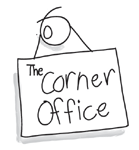Startup Branding: Why Trademark?
Trademarks are probably the cheapest intellectual property asset to protect. Still, I advise most of my clients to leave issues of branding and trademarks until their path to market is clearly defined. The reason? Between alpha and beta trials, the market for new technologies often moves, and repositioning of your company and your products is often necessary. Why spend the money on developing a trademark portfolio until you have settled on your first market and your marketing strategy?
Two caveats here: First,this approach is not appropriate for consumer products businesses, who will need to satisfy potential retail channels up front that their product names are protected. Second, none of my clients has had the foresight to coin terms like podcasting or TechCrunch, which were catchy enought to be worth protecting from the get-go.
I understand the need to name your business (and your products) in a way that is meaningful to you, but you need to weigh this against the potential cost and hassle of doing so. I still occasionally suffer from post-traumatic branding disorder because of the branding whimsies of one CEO during the height of the dot-com boom. Back then, branding was really early stage investor relations. Even though we had no revenue, my company needed an eye-catching logo and a snappy name to create pre-IPO buzz. Because we were going to have an IPO within 18 months, even if our business had no revenue...right?
In a three-month period, I spent hundreds of thousands of dollars on search and registration fees creating an international trademark portfolio that: (a) was based on several names from Arthurian legends (p.s., the good ones were already taken), for no particular reason other than the CEO liked King Arthur, (b) added an umlaut to one name to distinguish it in international markets, (c) removed the umlaut because it made trademark searches and registrations inpossible, (d) added ".com" to our trademarks because our competitors did, (e) changed our logo to include multiple colours (like Google), and (e) removed the ".com" because the market was beginning to soften. All before we booked any revenue.
We sold the business to another Company and the trademarks were never heard of again. In the purchase documents, my company's name was spelled three different ways.
If you do have a trademark you wish to protect, register it (go talk to my buddy Jessica Levy at Preston Gates in Seattle or, for Canada, Chris Hale at Blake, Cassels). But don't stop there; protect that expenditure by making sure you use your mark correctly. This means, at a minimum:
–Have a Corporate Standards manual which set out the marks as registered and impose rules for use. Make it available to employees and licensees.
–Set a trade-mark apart from other words (whether by upper case, italics or distinctive typestyle)
–Use your mark as an adjective and not a noun (e.g. Xerox brand photocopiers and not "can I use your Xerox?") or verb ("I Xeroxed a copy for you")
–Give notice of trade-mark ownership ("TM" or "R" )
–Make sure to use the mark as registered
–Do not pluralize trade-marks
–Take action against infringers
Two caveats here: First,this approach is not appropriate for consumer products businesses, who will need to satisfy potential retail channels up front that their product names are protected. Second, none of my clients has had the foresight to coin terms like podcasting or TechCrunch, which were catchy enought to be worth protecting from the get-go.
I understand the need to name your business (and your products) in a way that is meaningful to you, but you need to weigh this against the potential cost and hassle of doing so. I still occasionally suffer from post-traumatic branding disorder because of the branding whimsies of one CEO during the height of the dot-com boom. Back then, branding was really early stage investor relations. Even though we had no revenue, my company needed an eye-catching logo and a snappy name to create pre-IPO buzz. Because we were going to have an IPO within 18 months, even if our business had no revenue...right?
In a three-month period, I spent hundreds of thousands of dollars on search and registration fees creating an international trademark portfolio that: (a) was based on several names from Arthurian legends (p.s., the good ones were already taken), for no particular reason other than the CEO liked King Arthur, (b) added an umlaut to one name to distinguish it in international markets, (c) removed the umlaut because it made trademark searches and registrations inpossible, (d) added ".com" to our trademarks because our competitors did, (e) changed our logo to include multiple colours (like Google), and (e) removed the ".com" because the market was beginning to soften. All before we booked any revenue.
We sold the business to another Company and the trademarks were never heard of again. In the purchase documents, my company's name was spelled three different ways.
If you do have a trademark you wish to protect, register it (go talk to my buddy Jessica Levy at Preston Gates in Seattle or, for Canada, Chris Hale at Blake, Cassels). But don't stop there; protect that expenditure by making sure you use your mark correctly. This means, at a minimum:
–Have a Corporate Standards manual which set out the marks as registered and impose rules for use. Make it available to employees and licensees.
–Set a trade-mark apart from other words (whether by upper case, italics or distinctive typestyle)
–Use your mark as an adjective and not a noun (e.g. Xerox brand photocopiers and not "can I use your Xerox?") or verb ("I Xeroxed a copy for you")
–Give notice of trade-mark ownership ("TM" or "R" )
–Make sure to use the mark as registered
–Do not pluralize trade-marks
–Take action against infringers


<< Home